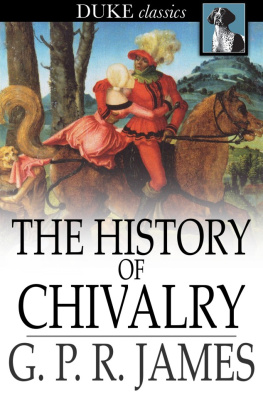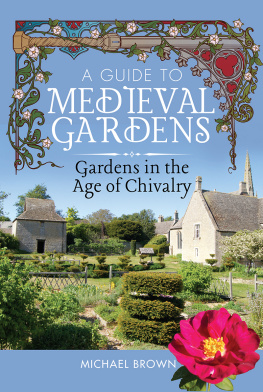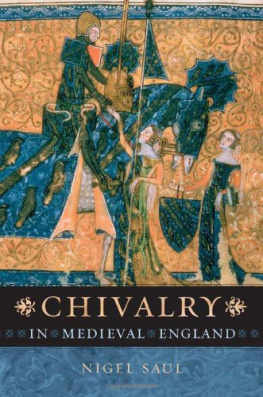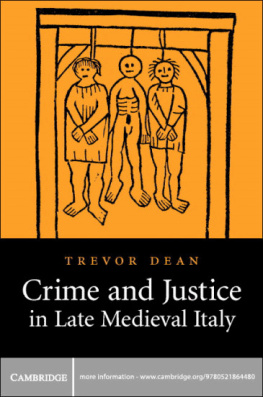Jean de Saintr
THE MIDDLE AGES SERIES
Ruth Mazo Karras, Series Editor
Edward Peters, Founding Editor
A complete list of books in the series
is available from the publisher.
Jean de Saintr

A Late Medieval Education
in Love and Chivalry
Antoine de La Sale
TRANSLATED BY
Roberta L. Krueger and Jane H. M. Taylor

Copyright 2014 University of Pennsylvania Press
All rights reserved. Except for brief quotations used for
purposes of review or scholarly citation, none of this book
may be reproduced in any form by any means without
written permission from the publisher.
Published by
University of Pennsylvania Press
Philadelphia, Pennsylvania 19104-4112
www.upenn.edu/pennpress
Printed in the United States of America on acid-free paper
10 9 8 7 6 5 4 3 2 1
Library of Congress Cataloging-in-Publication Data
La Sale, Antoine de, 1385?1461?
[Hystoyre et plaisante cronicque. English.]
Jean de Saintr : a late medieval education in love and
chivalry / Antoine de La Sale ; translated by Roberta L.
Krueger and Jane H. M. Taylor.1st ed.
p. cm. (The Middle Ages series)
Includes bibliographical references and index.
ISBN 9780-812245868 (hardcover : alk. paper)
1. Saintr, Jehan de, approximately 13201368Fiction.
I. Krueger, Roberta L. II. Taylor, Jane H. M.
III. Title. IV. Series: Middle Ages series.
PQ1567.H3K78 2014
843'.2dc23
2013042038
CONTENTS

INTRODUCTION

Antoine de La Sales Le Petit Jehan de Saintr, or Jean de Saintr is one of the most important works of prose fiction of the later Middle Ages. It has been hailed as one of the first historical novels for its account of what purports to be the chivalric biography of a historical knight, the fourteenth-century Jean of Saintr (132068), who was seneschal of Anjou and Maine. But, as we shall see, La Sales account of the glorious exploits of a knight who lived a hundred years prior to the books composition bears often only a tenuous relationship to historical events: the authors agenda extends well beyond providing an accurate account of the past. Written in the last days of the flowering of chivalry, poised on the threshold of the print revolution, Saintr can also be rightly considered one of the last great medieval compilations. Among the many materials incorporated within the fictional love story that will be described below, Saintr includes a treatise on the seven deadly sins; tracts on the Beatitudes and the seven virtues; advice about personal grooming; numerous detailed descriptions of clothing and armor; lengthy set pieces recounting ceremonial tournaments and other combats; as well as a conclusion strongly evocative of a fabliau. This fascinating blend of sacred and profane, fictional and historical, serious and comic modes has long intrigued critics and has earned Saintr a place in the French canon as a precursor to Rabelais, Madame de La Fayette, and Laclos.
Written in 1456 for Jean, Duke of Calabria, son of King Ren of Anjou, Jean de Saintr has long been prized for its accounts of chivalric exploits, heraldic blazons, and lavish costumes and for its sharp observation of social relations in a pseudo-historical court. The romance has also delighted readers with its seeming upending of courtly conventions in the last part of the romance, when a lusty monk cavorts with the earnest young knights lady love and makes a laughingstock of self-proclaimed chivalric heroes, before being painfully punished by the hero for his wicked tongue. The splendid scenes at court, the comic undercutting of the hero, and the ironic twists and turns of the plot recounting a youths social ascension from lowly page to one of the finest knights in the realm have ensured Jean de Saintr a place in the pantheon of late medieval French romances.
Nonetheless, certain aspects of Saintr have given readers pause. The romance includes lengthy didactic passages and citations from church doctrine that would seem more appropriate for a devotional treatise than a romance. La Sales ample descriptions of clothing and livery, weaponry, heraldry, and chivalric protocol sometimes overwhelm the narrative thread. Indeed, as one critic has calculated, the love story that frames and supports the romancethe tale of Jean, Madame, and Lord Abbotoccupies less than a quarter of the text. Whatever one may think of this assessment (since the qualities that make Saintr the first prose novel for Kristeva are features of many late medieval narratives), Saintrs hybrid textuality enhances rather than diminishes its character as a transitional text, a late medieval didactic compilation in a fictional frame that foreshadows in different ways both the encyclopedic narratives of Rabelais and the dramatic frame story of Marguerite de Navarres Heptamron, a collection of nouvelles.
Lest we doubt that Antoine de La Sale and his medieval readers valued the material that modern readers might find tediouswhich is to say, the extensive parts of the romance that are not directly related to the love trianglewe have only to consider the romance in its manuscript context. One of the ten extant Saintr manuscripts, Bibliothque nationale de France [BnF] MS nouv. acq. fr. 10057, is considered an authors manuscript, a copy on which La Sale made editorial corrections and additions, perhaps in his own hand. Its rubricated, pen-flourished initials, prominent pieds-de-mouche (paragraph markers), and elegant mise en page provide a decorative, vibrant frame that animates and enhances its contents. La Sale presents his patron with a handsome course pack of texts that would have been considered useful for a medieval courtly audience; moral lessons and practical advice are cleverly enfolded within an engaging love story whose racy dnouement keeps one reading to the end.
Antoine de La Sales Life and Works: An Overview
Antoine de La Sale was born around 1385, the illegitimate son of the Gascon mercenary swordsman Bernardon de La Sale, whose martial skills served first for the English on French soil during the Hundred Years War (13371453); then for popes based in Avignon during the Great Schism; and finally for Louis II of Anjou, putative heir to the throne of Sicily through his aunt Jeanne of Naples, descendant of Saint Louiss brother. from which to observe the rich textures of court life and perceive firsthand both the protocol and the physical realities of chivalry. His experience as a tutor also gave him, no doubt, a predilection for moralizing discourse, much of it culled from classical authors and Christian doctrine, and stemming from the many years in which he was charged with the moral education of noble youth.

FIG. 1. Paris, BnF, MS nouv. acq. fr. 10057, f. 11r: showing La Sales emendations.
Reproduced by permission of the Bibliothque nationale de France.
Next page













